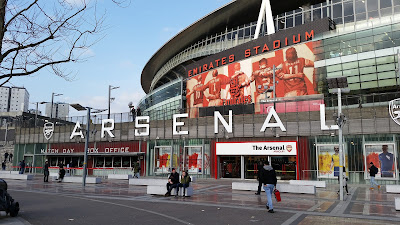When it comes to Arsenal FC, strong emotions are invoked. For instance, the dramatic fall from regular Champions League Placing, the frequent turn around of managers in recent years, and the permanent rivalry with London rivals divides opinions as no other subject can.
A Brief History Of The Gunners
Weapons store were established as Dial Square in 1886 by a gathering of laborers utilized by the Dial Square workshop at the Royal Arsenal, a combat hardware production line in Woolwich, Kent (officially part of the new County of London from 1889).[a] They were driven by a Scotsman, David Danskin, who bought the club's first football, and Jack Humble. Among their number was the previous Nottingham Forest goalkeeper Fred Beardsley, who might later alongside Morris Bates get a bunch of red units from his old club, subsequently giving Arsenal the shadings they actually wear today.
Dial Square played their first match on 11 December 1886 against Eastern Wanderers on an open field on the Isle of Dogs, which they won 6–0.[b] The club were renamed Royal Arsenal before long, allegedly on Christmas Day. Initially the club played on Plumstead Common, yet before long looked for elective homes, first and foremost the Sportsman Ground in Plumstead prior to moving to the nearby Manor Ground in 1888. Discontent with the Manor Ground's helpless offices, the club moved to the close by Invicta Ground in 1890, preceding getting back to the Manor Ground three years after the fact as the Invicta Ground's lease demonstrated too expensive.
During this period, Royal Arsenal began to win neighborhood prizes, winning both the Kent Senior Cup and London Charity Cup in 1889–90 and the London Senior Cup in 1890–91; they additionally entered the FA Cup without precedent for 1889–90. However, the bay among Arsenal and the expert sides from the North before long got obvious, and Arsenal confronted the danger of their novice players being attracted away by the cash proficient sides could offer; after Derby County had played Arsenal in a FA Cup tie in 1891, they endeavored to sign two of Arsenal's beginner players on proficient contracts.[3] Royal Arsenal's transition to demonstrable skill in 1891 was disapproved of by numerous individuals of the novice southern clubs, and they were restricted from taking part in nearby rivalries by the London Football Association. With friendlies and the FA Cup the solitary matches accessible for Royal Arsenal, they endeavored to set up a southern likeness The Football League, yet the move failed. The club changed its name to Woolwich Arsenal in 1893 when it's anything but a restricted obligation organization to raise cash-flow to buy the Manor Ground. Woolwich Arsenal's future looked dreary until the Football League acted the hero by welcoming them to join in 1893. Arms stockpile were the primary Southern club to enter the League, at first joining the Second Division; accordingly, a portion of the club's novice players who dismissed demonstrable skill and needed a laborers' group to address simply the Royal Arsenal, split away to shape a fleeting elective side, Royal Ordnance Factories.
Woolwich Arsenal (in dim shirts) playing Newcastle United (in striped shirts) in a FA Cup semi-last – the club's first – at the Victoria Ground, Stoke on 31 March 1906; Newcastle won 2–0.
Woolwich Arsenal played in the Second Division for eleven seasons, and by and large involved mid-table before the arrangement of Harry Bradshaw as supervisor in 1899; Bradshaw and his star signings, including goalkeeper Jimmy Ashcroft (Arsenal's first England global) and chief Jimmy Jackson, won advancement to the First Division in 1903–04. In any case, Bradshaw continued forward to Fulham in May 1904, preceding the Gunners had kicked a ball in the first class. Notwithstanding some solid exhibitions in the FA Cup – the club arrived at the semi-finals in 1905–06 and 1906–07 – Arsenal were always unable to challenge for the League title, just twice completing above 10th spot in the First Division somewhere in the range of 1904 and 1913.
The reason for this decrease was the club's continuous monetary issues; notwithstanding the blast in football during the mid twentieth century, the club's geographic confinement, in the somewhat underpopulated space of Plumstead (then, at that point on the edges of metropolitan London), implied attendances and consequently pay were low. To remain above water, Woolwich Arsenal had to sell their headliners (counting Ashcroft, just as Tim Coleman and Bert Freeman), and gradually began to descend the table, which intensified their monetary circumstance as groups fell. Before the decade's over the normal participation at Manor Ground was 11,000, somewhat over portion of what it had been in 1904. The club were near chapter 11, and in 1910 went into deliberate liquidation prior to being purchased out by a consortium of money managers; the biggest investor among the new proprietors was the property financier Sir Henry Norris, who was likewise the executive of Fulham.
*Some information sourced from Wikipedia

Comments
Post a Comment